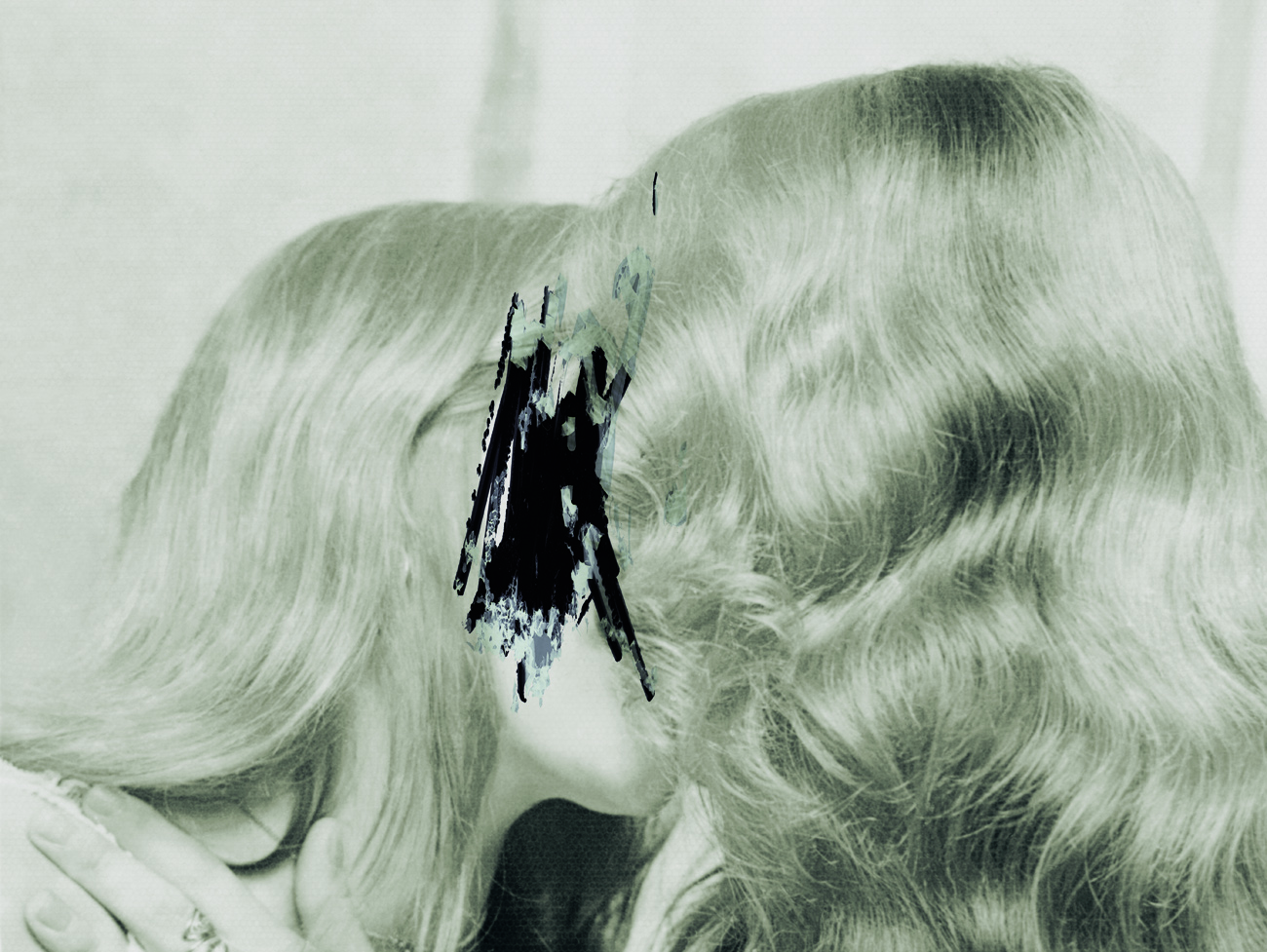Purple Magazine
— S/S 2008 issue 9
Sante d’Orazio
I THINK IT WAS ON AN EROTIC POSTCARD that I first saw a photograph in which a black bar covers the eyes of someone. I couldn’t figure it out. Who would have been so interested in the eyes? Later I realized it was to hide the subject’s identity. But why? Were they famous? Would the type of people who posed for such pictures be that worried about being recognized? Then I realized it was probably to protect them from prosecution. Yes, that might be why old porn shots have black bars over the eyes. To protect people from the sheriff.
Along the same lines: In Japan teams of little old ladies armed with magic markers black out the genitals of models in imported porn magazines. Not that someone would be recognized from their labia. But crossed out they become acceptable; the unacceptable body part is no longer in view. Thus preventing the prosecution of the seller of such literature.
A few decades ago the women’s magazine Mademoiselle ran pictures of women on the street, to illustrate how not to dress. The eyes of the women were blocked out. Was it to protect the identity of the fashion violators or to protect the magazine from legal action taken by them? Well, yes and yes.
Usually when the eyes are barred or crossed out there’s a lawyer in the picture. Well, maybe not in the actual picture (although the guy in women’s panties could be a lawyer). But a lawyer advising you that, “If you’re going to print this, you’d better cross out the eyes. You could get sued.”
Eyes are a release after the fact. Which means that our identity is all tied up in our two orbs. Or in Ray Charles’ case, his Ray Bans. There can be other motives for crossing out eyes. In surveillance pictures of criminal activity, people with crossed-out eyes standing among others caught open-eyed and red-handed let us know that undercover cops are still out there on the job setting up more suckers.
Burroughs knew all about cancelled eyes: “…and there he is, toothless old woman face and cancelled eyes.” And: “Hands slack on lap he’s looking out at the winter dawn with the cancelled eyes of junk.”
Oh yeah, cancelled eyes — the first real crossed-out eyes I ever saw. The eyes of dead characters in old cartoons were Xed out. What is it about eyes? Like fingerprints, irises are supposed to be foolproof evidence of identity. Maybe eyes are really the way we recognize people. Deep programming in our brains makes this so. I just got a new automatic digital camera that has face recognition software. I haven’t used it yet, but I want to see just how good it is. I’ll get some African masks and Jack O’lanterns. Let’s just see what it thinks a face is. I wonder if it’ll recognize a face with cancelled eyes.
Identity is a funny thing. My mother sends me these strange photos. They have holes cut out of them. A hole between and my brother and me, say. When I ask her why, she says, “Oh, I looked bad so I cut myself out.” I can only shake my head at this. What was she thinking? Or not thinking? There’s a window to the subconscious here. Or maybe it’s more of a trapdoor. Should I open it?
Sante D’Orazio’s scratch-outs explore the mystery of cancelled eyes and concealed identity. We want to know just who are these girls in the sexier of the pictures. Are they famous supermodels? What’s going on here? Is this for real? In this other shot, is it a Mafia First Communion? And the lady blowing bubbles: is she working undercover? Would we care about identity if it weren’t withheld? Is it the secret trigger of desire? The thing that’s withheld?
























































































































